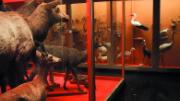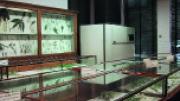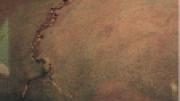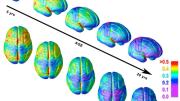Harvard has floated the idea that it build an important new museum of natural and cultural history on some yet-to-be-determined site in Allston at some time in the not-too-distant future. This museum would complement the planned new art museums that the University hopes to build in Cambridge, just across the Western Avenue Bridge from Allston (see "New Riverfront Museums, Housing?" November-December 1999, page 90).
The newly proposed museum has the potential to be a major cultural resource for Greater Boston. It would draw on the rich collections of the Museum of Comparative Zoology, the Botanical Museum, the Mineralogical and Geological Museum, and the Peabody Museum of Archaeology and Ethnology. The small Semitic Museum might join in as well.
The public-exhibition aspects of the first three of these component museums now are joined in what is called the Harvard Museum of Natural History. Its executive director is Joshua P. Basseches, M.B.A. '92, who came to the job in 1998 and who has high ambitions for the enterprise. "Harvard is world class in teaching and research by major figures in evolutionary biology," he says, "but we are not doing nearly as much as we could and should in presenting that research and our collections to the public. Our goal is to create the finest university-based, public, natural-history museum in the country."
Jeremy R. Knowles, dean of the Faculty of Arts and Sciences (FAS), was quoted in the journal Nature in January as saying that the University is planning to invest "hundreds of millions of dollars over the next five years" in the museum, in expanding the faculty, and in new facilities for scientific research and teaching. Joe Wrinn, the University's director of news and public affairs, was quick to put the dean's hopes in perspective. He told the Boston Globe that the museum plan was "very much in the exploratory stages. We haven't even begun the planning process or initiated any conversations with the neighborhoods in Allston-Brighton," where Harvard now owns about 220 acres of land (see "The Politics of Campus Planning," page 56). "Obviously, an FAS proposal will be taken under consideration," said Wrinn, "but final approval comes from the Corporation, and they have to consider the needs of all the faculties."
Planning for a new museum is sufficiently preliminary that even the governance structure of a new facility has not yet been determined, although it would remain under the aegis of FAS. Rubie Watson, director of the Peabody and senior lecturer on anthropology, will say of the proposal bruited in the press only that "I am very excited by the potential of a new museum building and look forward to future discussions that will establish its mission and scope."
Knowles told this magazine that the new museum might require 100,000 to 200,000 square feet of building space. The timetable for its construction is unknowable at present, he said, because a study of what sort of facilities should go where in Allston has not been concluded, and it may turn out that the best site for a public museum is heavily encumbered by railroad tracks or trucking yards.
Knowles regards a new museum as "a splendid opportunity for opening up the buried treasures in the Peabody and the Museum of Natural History." In his annual letter to the faculty, he wrote that "the glass flowers and many of the animal specimens and skeletons could be more attractively displayed and much better appreciated by the public, and the collections of the Peabody could be more accessibly stored, preserved, and exhibited, in a new building. If this proved possible, we could both share the treasures of our museum collections more widely, and liberate space that is close to the Yard for teaching and research."
The Peabody and the Natural History Museum together have about 50,000 square feet of exhibition space in the present museum complex on Oxford Street and Divinity Avenue. Were the museums to move, FAS would recycle that space, along with another 50,000 square feet that could be gained through more efficient storage of those parts of the collection that would remain on site for research purposes.
Reclaimable space in Cambridge is itself buried treasure of the rarest sort.








